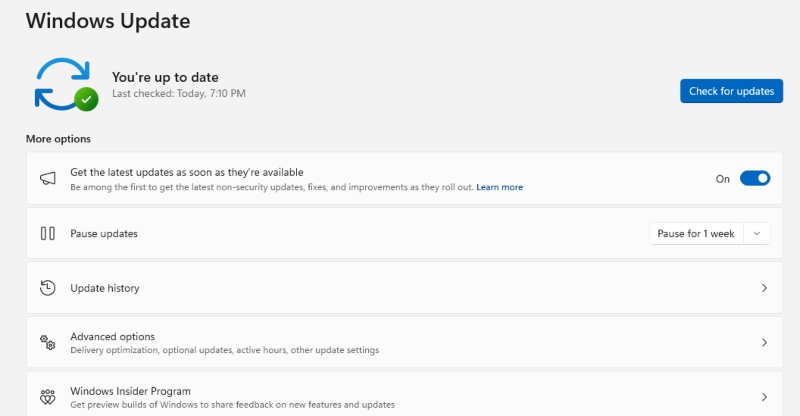Solved: Windows Defender Won’t Turn On
Windows Defender is the built-in security solution for Windows users, offering real-time protection against malware and other cyber threats. However, sometimes, users encounter an issue where Windows Defender won’t turn on, leaving their system vulnerable. If you’re facing this problem, this guide will help you troubleshoot and fix it.
Reasons Why Windows Defender Won’t Turn On?
Several factors can prevent WD from activating. Here are the most common reasons:
- Third-Party Antivirus Software – If you have another antivirus installed, WD may be disabled automatically.
- Corrupted System Files – Damaged or missing files in Windows can interfere with Defender’s functionality.
- Group Policy Restrictions – Certain system policies may prevent Defender from starting.
- Windows Security Services Not Running – If essential security services are disabled, Defender won’t work.
- Outdated Windows Updates – An outdated or buggy Windows version may prevent Defender from turning on.
How to Fix Windows Defender Not Turning On
1. Check for Third-Party Antivirus Software
Windows Defender is automatically disabled when another security program is installed. To check:
- Open Settings (Win + I).
- Go to Apps > Installed apps.
- Look for any third-party antivirus software.
- If found, uninstall it and restart your PC.
After removing the antivirus, try enabling Defender again.
2. Restart Windows Security Services

Defender relies on essential background services. If they aren’t running, Defender won’t turn on.
- Press Win + R, type services.msc, and hit Enter.
- Find Windows Security Service and Windows Defender Antivirus Service.
- Right-click each, select Properties, and set the Startup type to Automatic.
- Click Start, then Apply > OK.
- Restart your PC and check if Defender is working.
3. Run Windows Troubleshooter
The built-in troubleshooter can detect and fix issues preventing Defender from running.
- Open Settings (Win + I).
- Go to System> Troubleshoot > Other troubleshooters.
- Scroll down to Windows Security and click Run.
- Follow the prompts and apply any suggested fixes.
4. Scan for Corrupted System Files
If Windows system files are damaged, they may affect Defender’s functionality. Run the SFC (System File Checker) scan to repair them:

- Open Command Prompt as Administrator.
- Type the following command and press Enter: sfc /scannow
- Wait for the scan to complete, then restart your PC.
If SFC doesn’t resolve the issue, run the DISM tool: DISM /Online /Cleanup-Image /RestoreHealth
This process repairs Windows system files and may restore Defender’s functionality.
5. Check Group Policy Settings (For Windows Pro & Enterprise Users)
Windows Defender may be disabled via Group Policy. Here’s how to check:
- Press Win + R, type gpedit.msc, and press Enter.
- Navigate to Computer Configuration > Administrative Templates > Windows Components > Microsoft Defender Antivirus.
- Find Turn off Microsoft Defender Antivirus.
- If it’s Enabled, double-click it and set it to Not Configured.
- Click Apply > OK and restart your PC.
6. Ensure Windows Is Up-to-Date

An outdated system can cause Windows Defender issues. Update Windows to ensure compatibility:
- Open Settings (Win + I).
- Go to Windows Update.
- Click Check for updates.
- Install any available updates and restart your PC.
7. Perform a Clean Boot
A clean boot helps identify if background applications are interfering with Defender.
- Press Win + R, type msconfig, and hit Enter.
- Go to the Services tab, check Hide all Microsoft services, then click Disable all.
- Switch to the Startup tab and open Task Manager.
- Turn off all startup programs and restart your PC.
Try enabling the Defender after restarting. If successful, re-enable services one by one to identify the culprit.
Should You Rely Solely on Windows Defender?
Windows Defender is an excellent built-in security solution, but relying on a more comprehensive security suite is crucial with today’s evolving cyber threats. People who are always online and do most of their work online are more susceptible to viruses, malware, and cyber-attacks. Would you be at ease if your computer is not thoroughly protected?

Fortect offers an all-in-one PC repair and malware protection solution. It provides real-time malware defense, automatically scans for threats, and even repairs corrupted system files and outdated drivers to keep your Windows system running smoothly.
Download Fortect for enhanced security and performance.
To better understand the difference between Windows Defender and third-party anti-virus programs, read our article, Microsoft Defender vs. Third-Party Antivirus: Which Is Better.
Conclusion
Windows Defender not turning on can be frustrating, but the solutions above should help restore its functionality. Following these troubleshooting steps can get Defender running again, whether due to third-party software, corrupted files, or system settings. However, consider supplementing Windows Defender with Fortect to ensure maximum protection against modern cyber threats.


![How Do I Fix Windows Error Recovery Screen [6 Causes]](https://wp-cdn.fortect.com/uploads/2023/04/12105142/windows-recovery-error-425x300.jpg)

